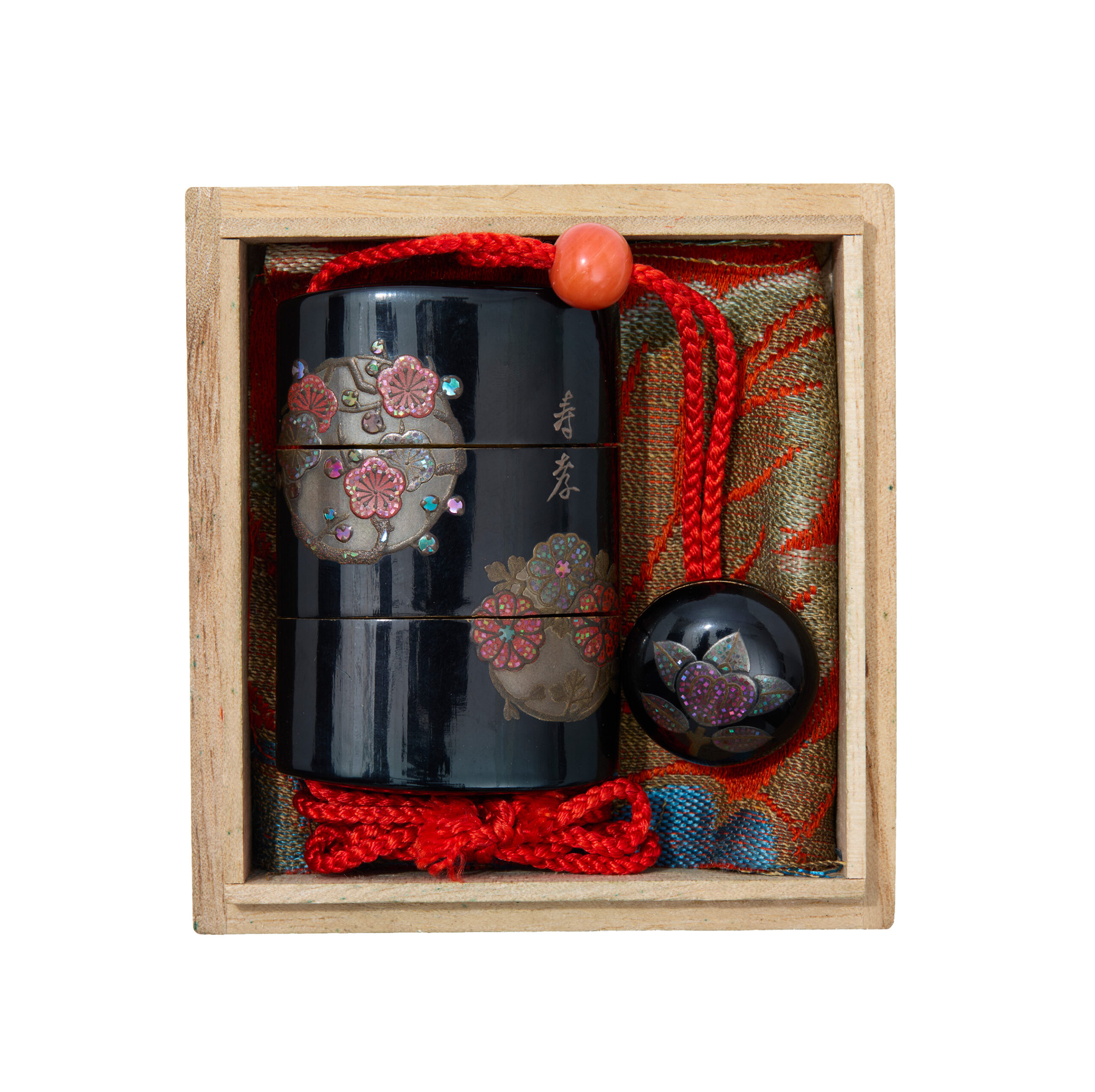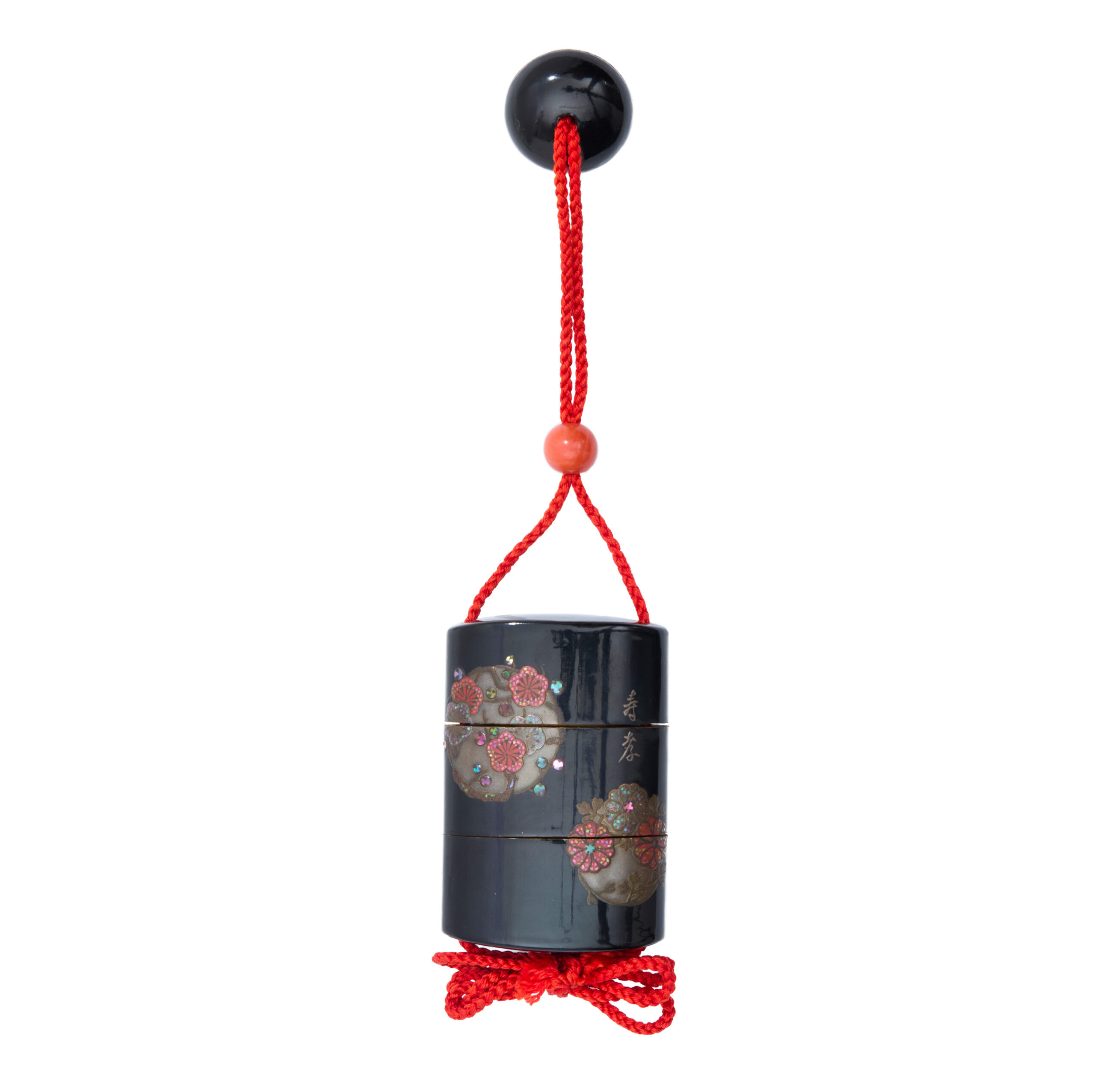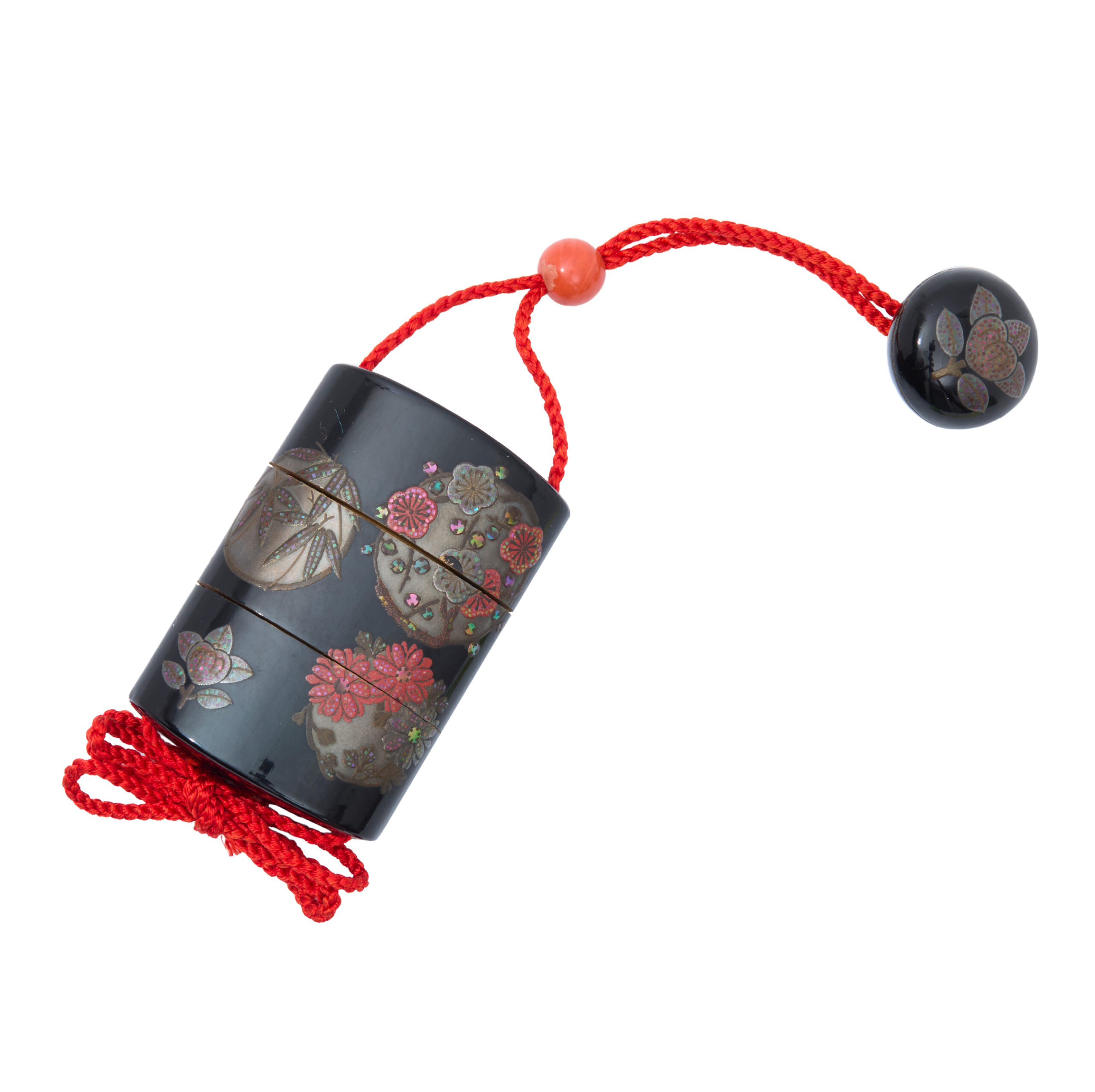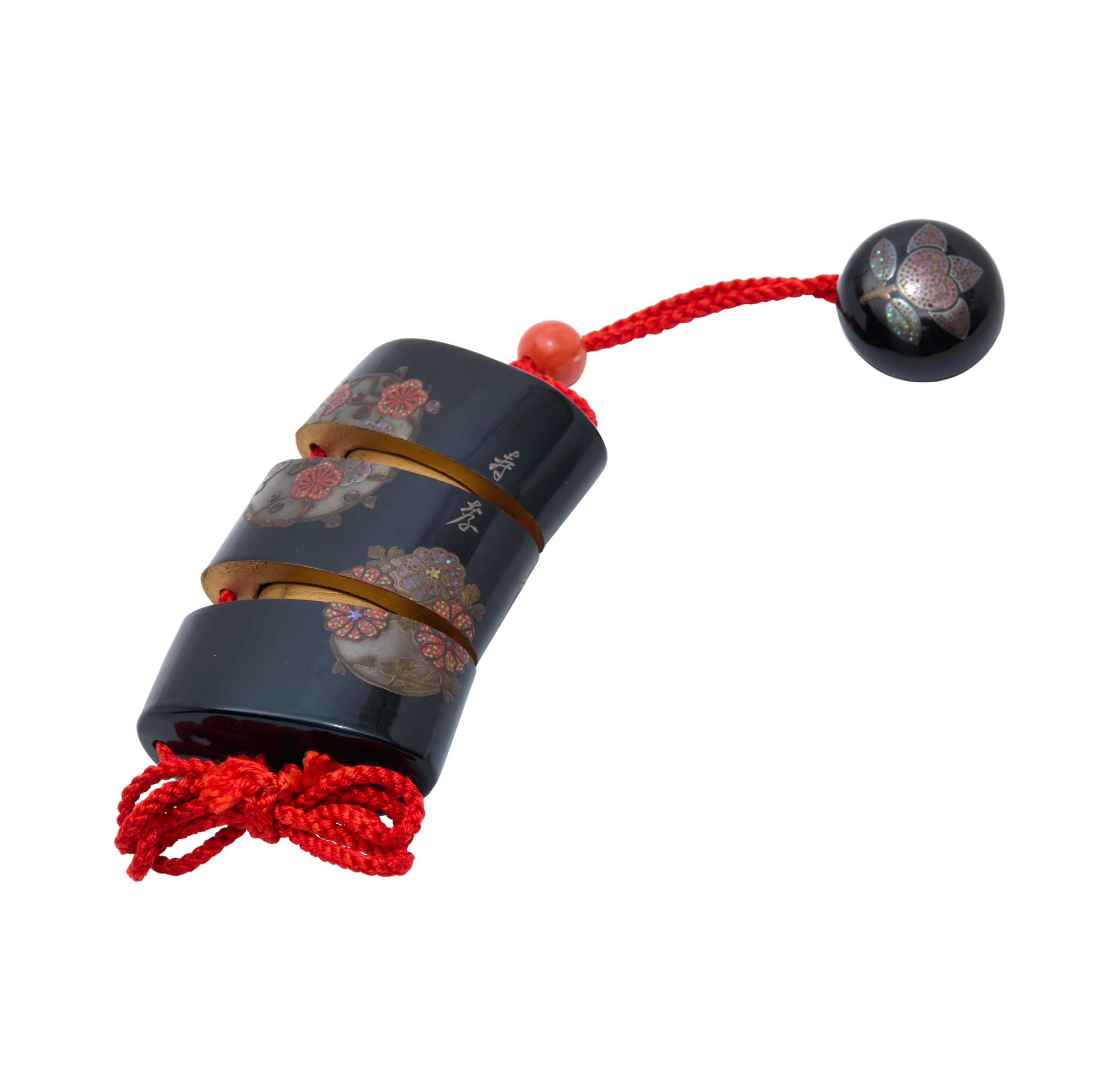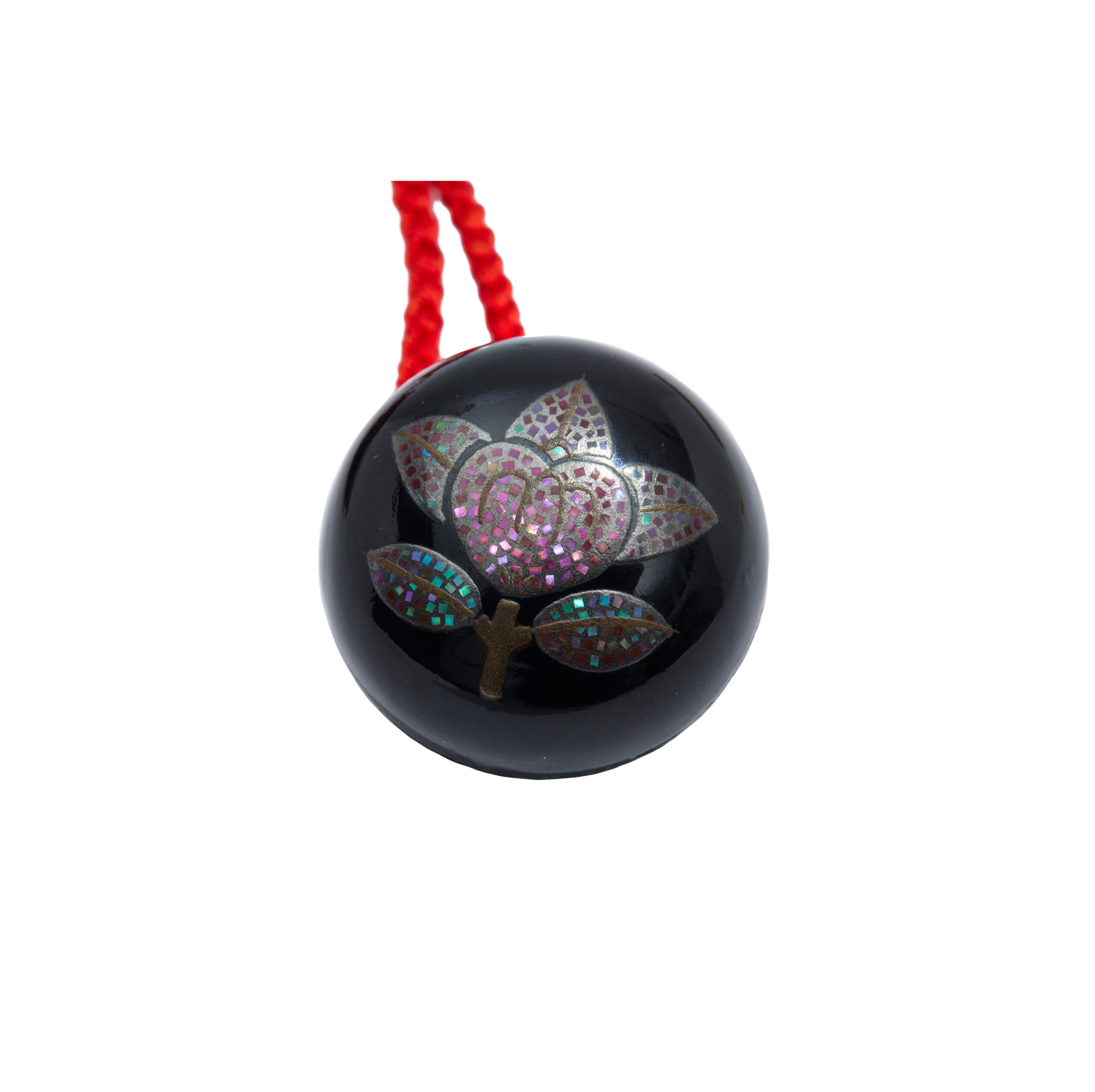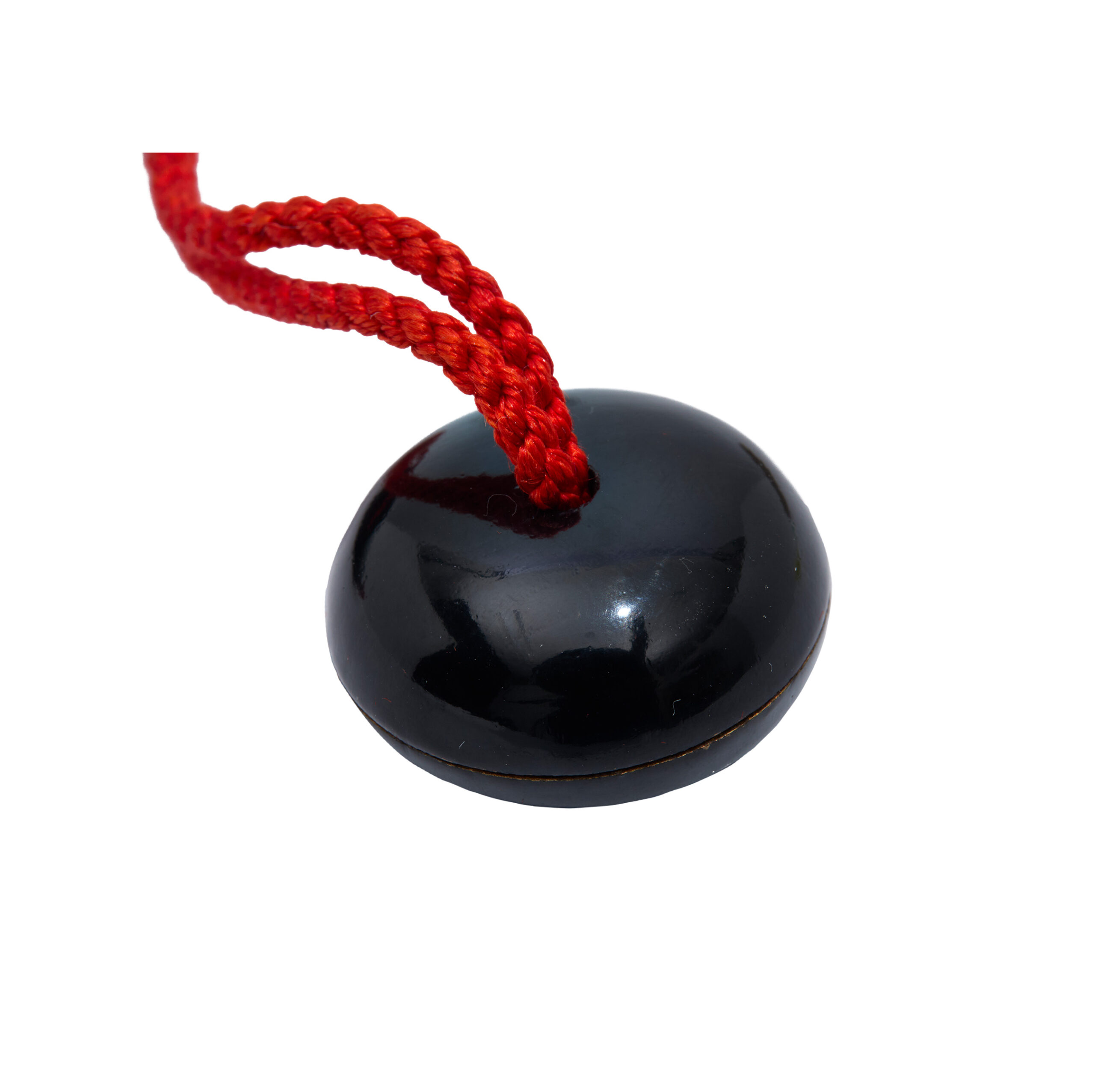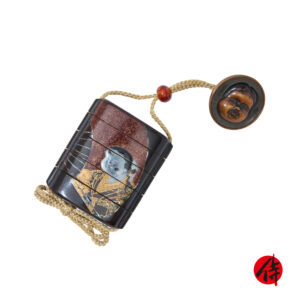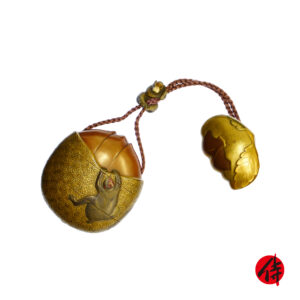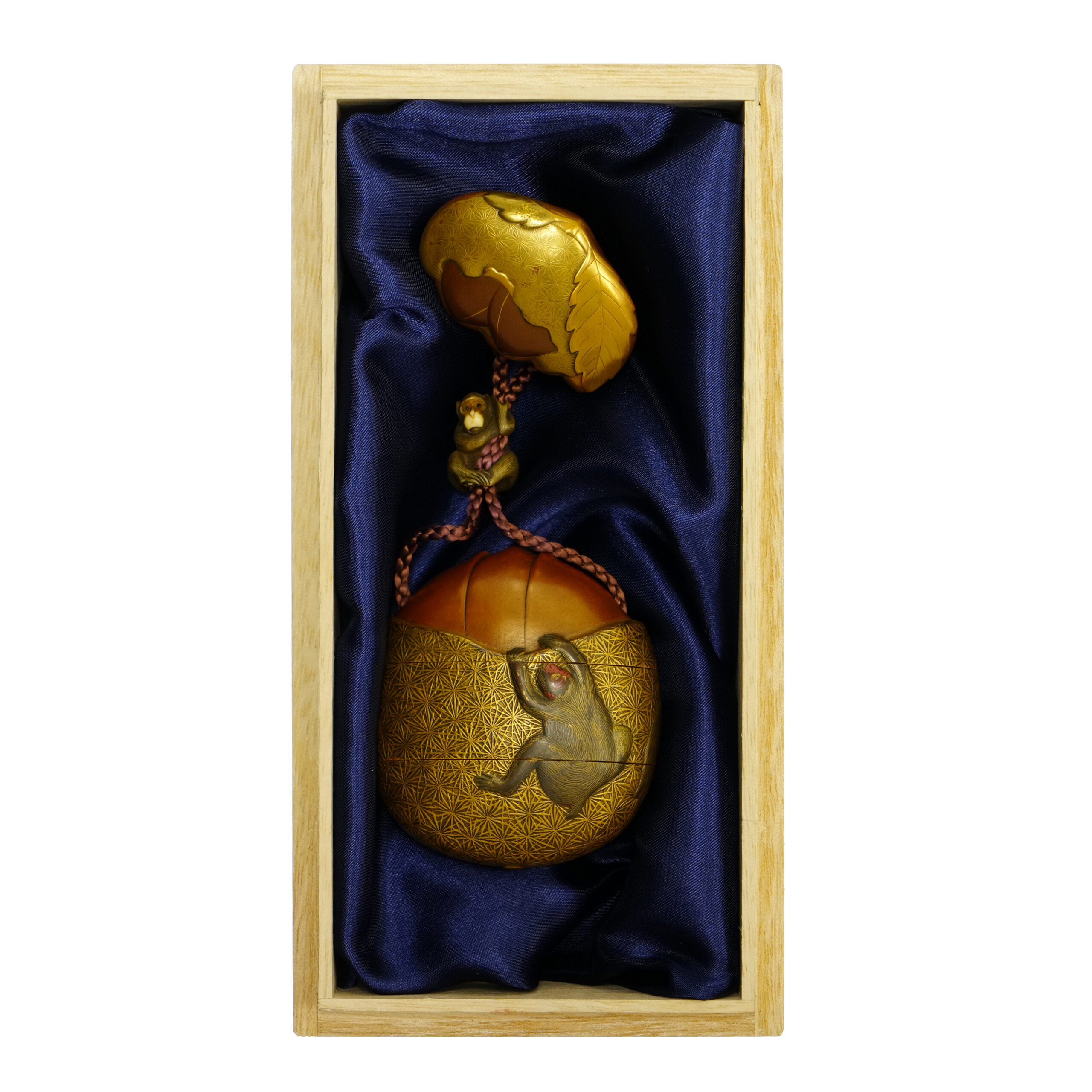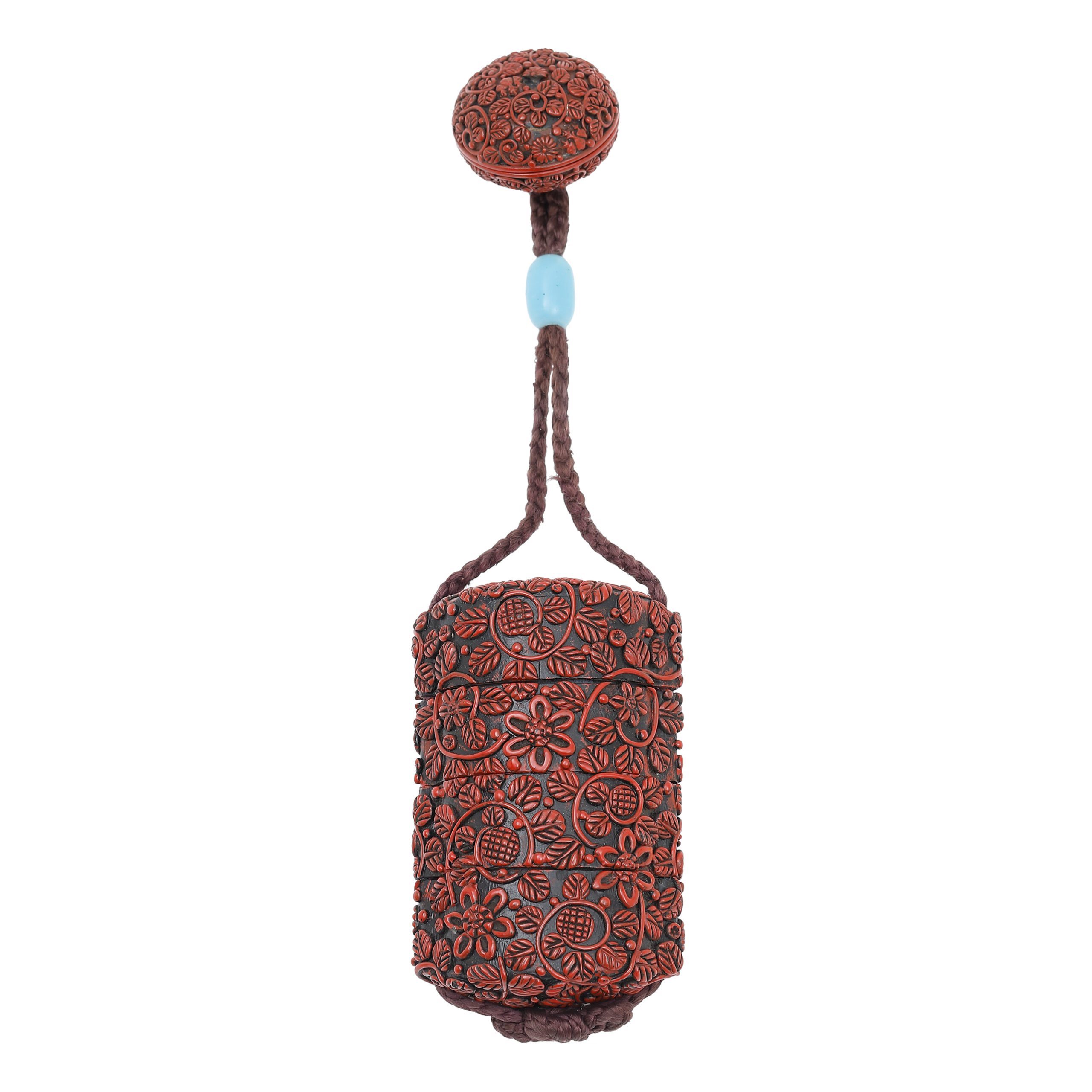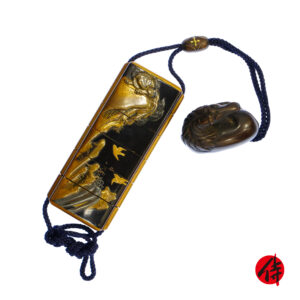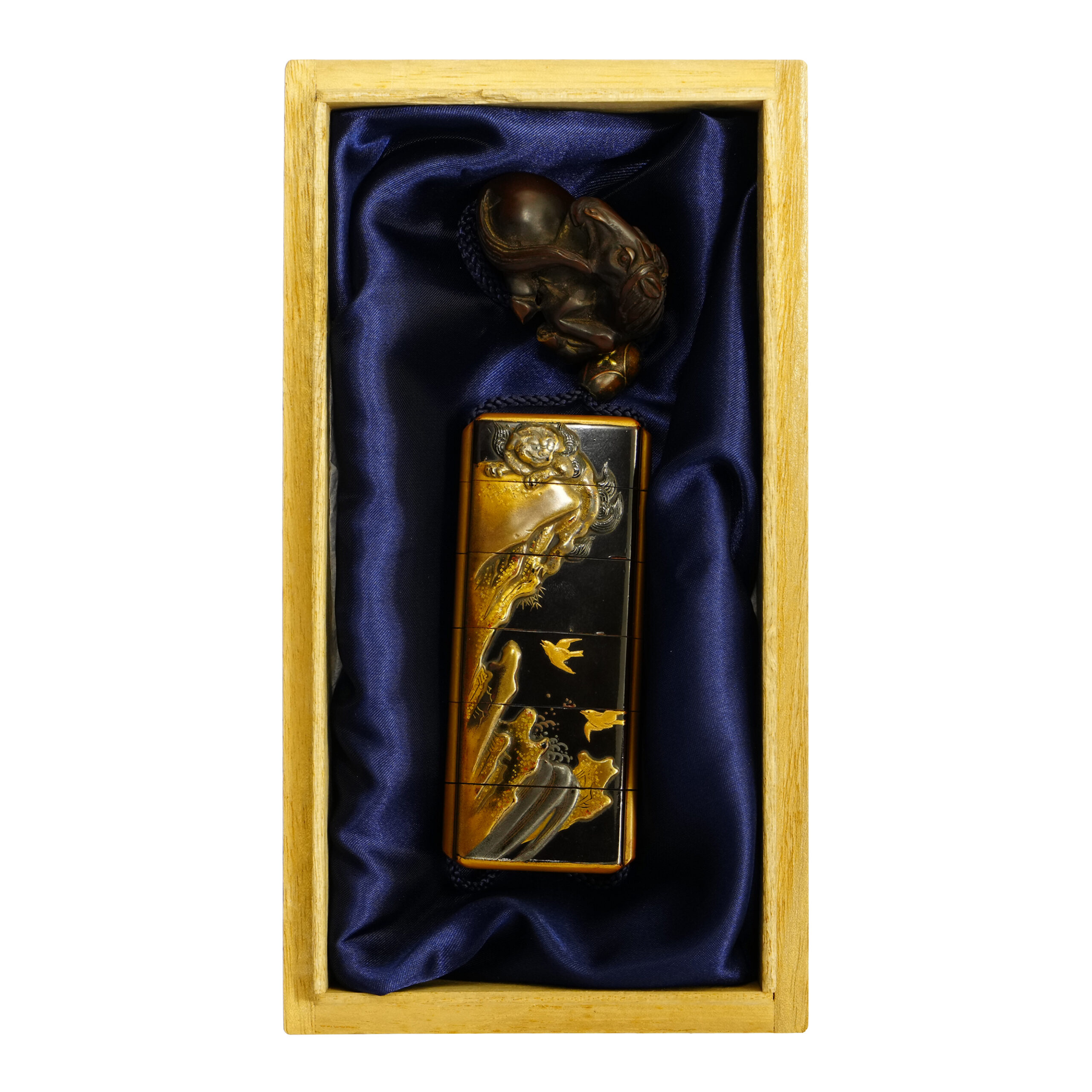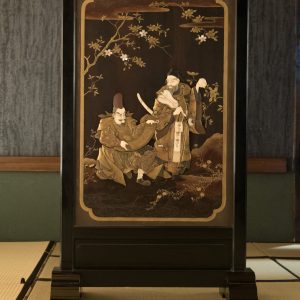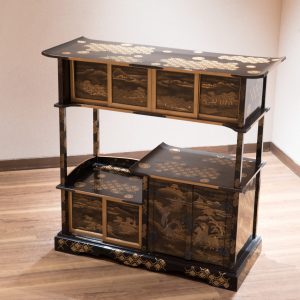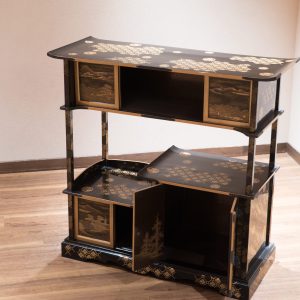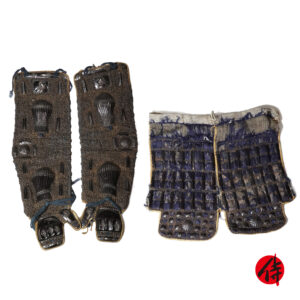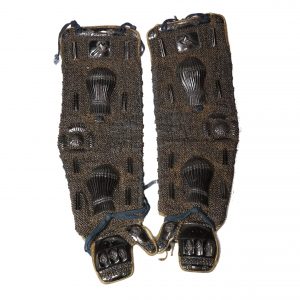Description
This Inro has a flat rectangular shape and is divided into 3 layers. A string was passed to both sides of each step, fastened with netting to prevent falls. Also, thanks to the Makie (蒔絵) technique, this Inro is luxurious. The Makie is a typical Japanese lacquer art technique developed uniquely in Japan for about 1,200 years. Firstly, it needs to draw a picture with lacquer on the surface with a thin brush. Next, sprinkle the gold powder from above to show the pattern before the lacquer hardens. This technique makes a gorgeous and elegant look to works, as seen in this Inro case.
We hope you enjoyed this description and wish this Inro would speak to you.
*As this item is an antique, please check each photo and ensure its condition.
What is Inro?
Inro is a small container for carrying medicine and tobacco leaves. In the Edo period, Samurai had a habit of carrying regular medicines in Inro, which were used daily and were popular as accessories that represent Edo crafts.
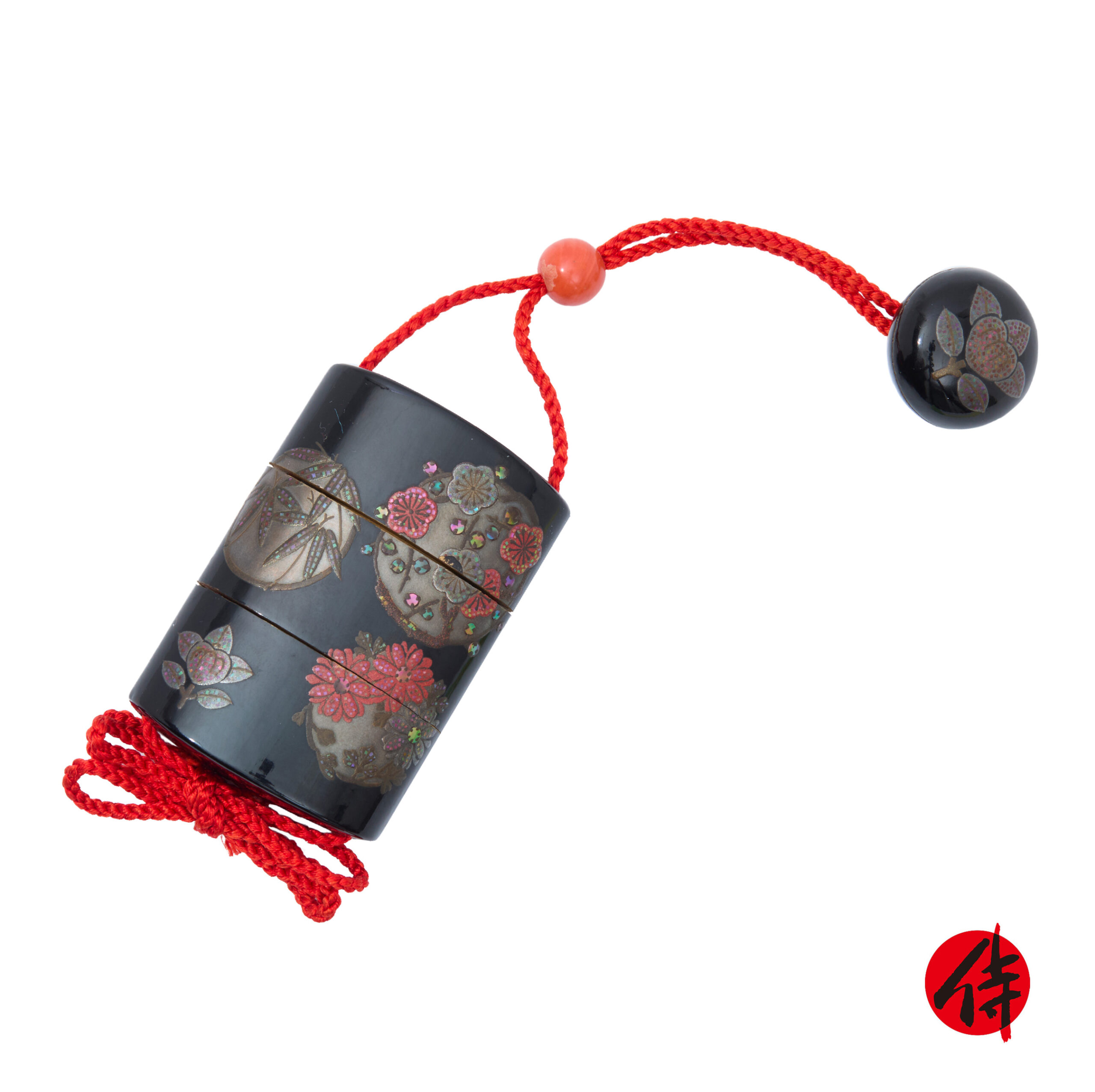
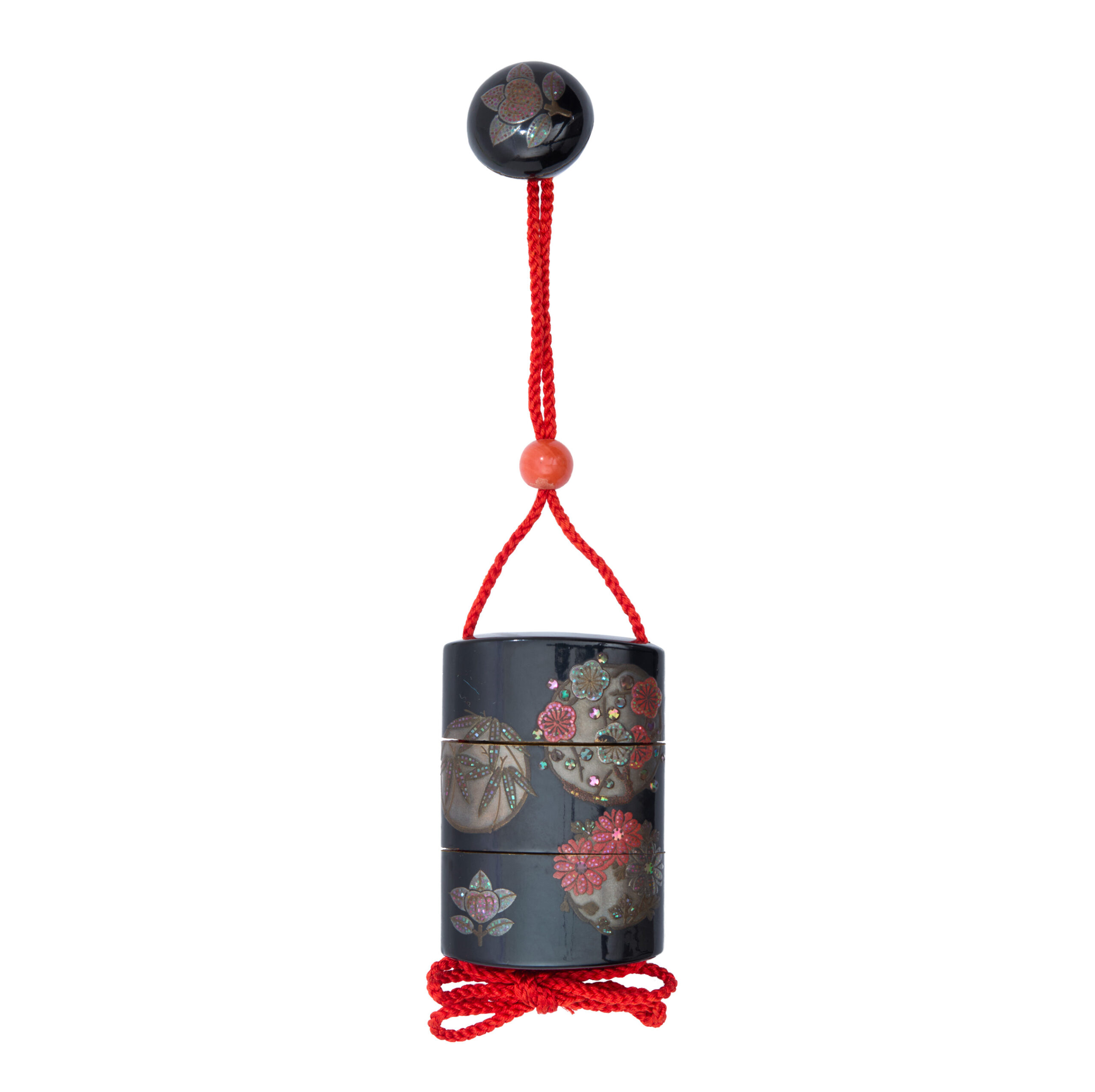
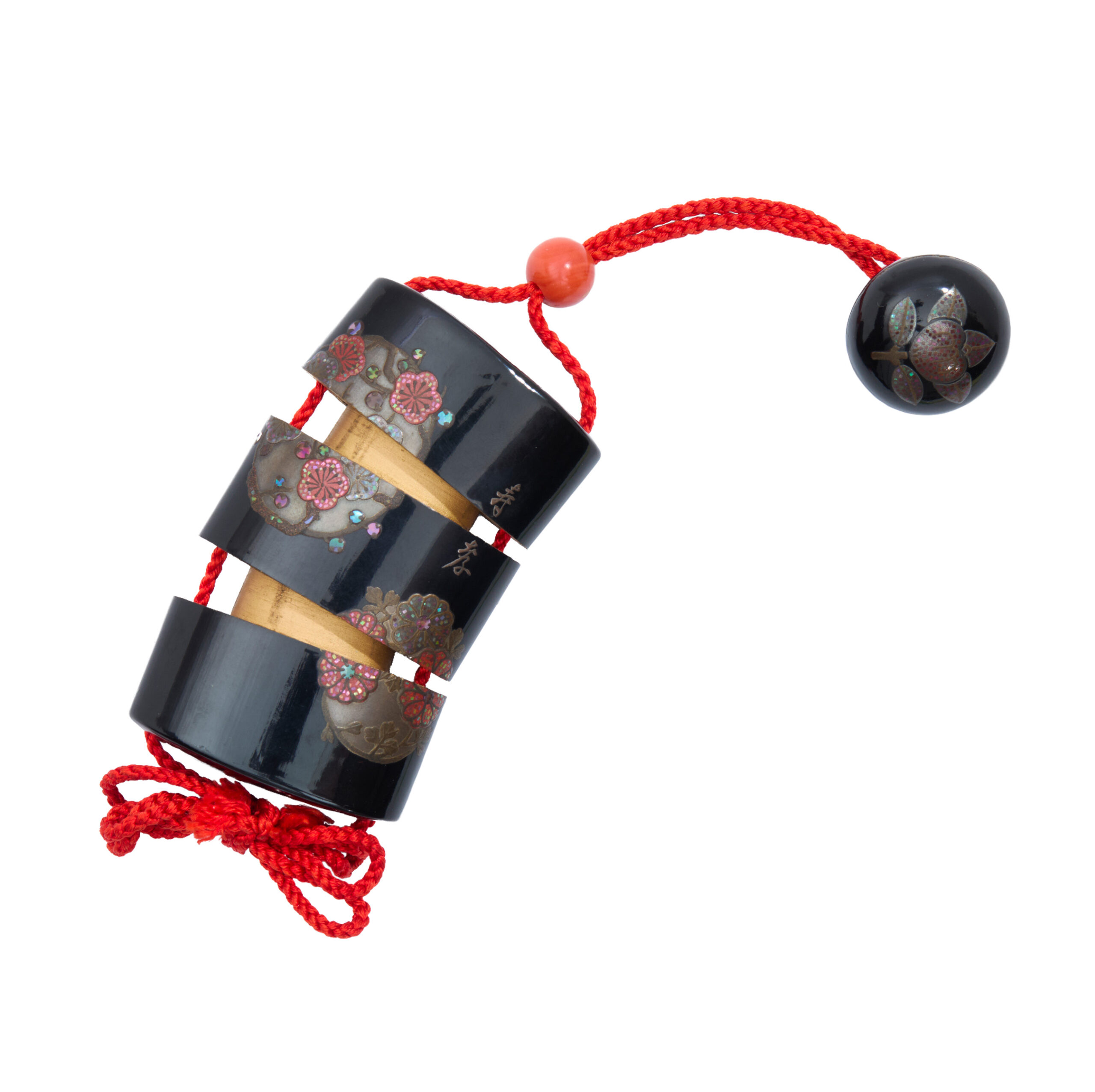
【About us】
Samurai Museum is located in Tokyo, Japan, exhibiting antique artifacts related to the Samurai history. Samurai Museum Shop is the place for those who are interested in Japanese culture and craftsmanship. We deal with antique Samurai swords/armor, traditional crafts made in Japan and so on.
【Payment method】
We accept payment through Stripe (Credit card), PayPal, Apple Pay or ChromePay, all of which are secure payment methods. Also, you don’t need to make an account on Stripe for the checkout. If you prefer other payment method, please contact us. You may either pay in JPY, USD, AUD, CAD, EUR, CHF or GBP. The price is set in Japanese Yen. Prices in other currencies are automatically calculated based on the latest exchange rate.

【Shipping duration】
We normally ship via EMS (Express Mail Service) provided by Japan Post. It usually takes at least 5-14 days to deliver the package after you place an order.
We offer Free International Shipping as long as we can ship your order by EMS. If you prefer other shipping carriers, please contact us.
We will inform you of the order’s tracking number via email. Please make sure you fill out your valid email address correctly.
*If you like to make sure if EMS shipping is available to your country, please contact us.

【How to make sure the condition】
Please keep in mind that what you are going to purchase is an antique item. We uploaded high resolution photos for you to check its condition thoroughly. If you like to see more photos with different angles, please feel free to contact us. We will be happy to send them to you so that you can make informed decision.
It is essential for us to know that you are happy with your choice of antique item and we are prepared to use the best of our ability to serve you.
Would you like see some more antique items for sale? Please check the link below. We hope you can find your favorite item.
https://www.samuraimuseum.jp/shop/product-category/antique/
